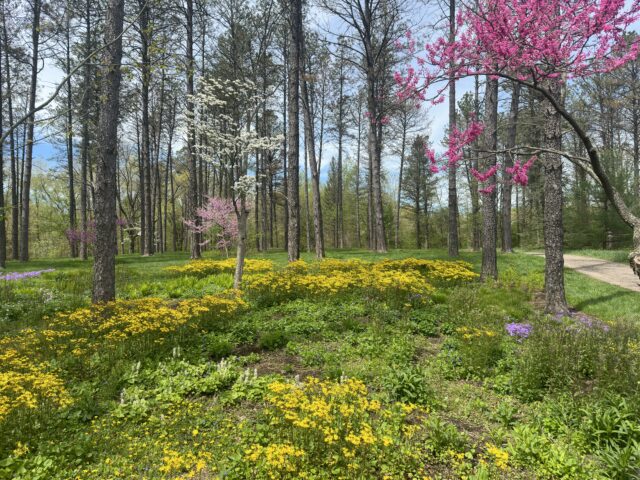
It’s that time of year when the woods turn yellow – or orange and red depending on where you live – and shine with the vibrance of fall color. This perennial autumn display represents the process of nutrient recycling and recovery by trees before they lose their leaves for the season. A process that results in the recovery of nitrogen and phosphorous, major plant nutrients that can be costly to obtain from soil, from dying leaves. This process of recycling is what reveals the yellow, orange and red pigments normally masked by the green plant pigment chlorophyll. But not all nutrients within a leaf can be recycled and many are lost when they drop from the tree onto the forest floor. This presents an opportunity for other organisms to use those nutrients lost by the trees (a process called decomposition which we’ll explore next week) and also an opportunity for plant scientists to explore how human change to our environment affects and alters tree biology. And that is the subject of this week’s post.
Although we spend a good deal of time these days concerned about the effects of global climate change on our forests, another serious change brought about the by burning of fossil fuels is acid rain. In 2009, Holden received a grant from the National Science Foundation to examine how acid rain affects the availability of nutrients like phosphorus in forest soil and the impact of those changes on tree growth and productivity. This NSF funded study involved raising soil pH from about 4.0 – fairly acidic – to a pH of 6.0 by the application of more than 20 tons of limestone to our forests. Our goal was to raise pH to simulate what soil chemistry and biology would have been like before the acidification of our forest soils due to the burning of fossil fuels. In this way, we can understand how our forests have changed due to acid rain. Since the start of the experiment, we’ve measured responses of changes in pH to nutrient availability, soil fungi and bacteria and forest trees. But trees take a long time to respond to changes in soil chemistry, so our study needs to extend over a long period of time. Long-term studies of this kind are touchstones in ecology and science because they help us understand how natural systems like forests respond to human impacts and environmental change over periods of time relevant to the system itself.
Our acid rain study, which we call APEX (Acid Precipitation EXperiment) involves measuring the growth of 1200 trees each spring and collecting leaves as they fall from the canopy each autumn. Litter baskets deployed in each experimental plot allow us to measure total leaf biomass within the treated trees, to see if soil pH and acid rain affect the amount of leaves trees produce. It also allows us to see whether acid rain affects the nutrient content of the falling leaves, and how efficient trees may be in reabsorbing leaf nutrients before leaf fall. Our leaf collections involve collecting leaves from over 108 litter baskets spread over the 36 experimental plots we monitor at Holden and Case Western Reserve Universities research farm in Hunting Valley. We collect leaves every two weeks throughout the fall, usually for a total of 4 collections. Leaves are oven dried at the Long Science Center, weighed and sampled for leaf nutrient content by plant species. We focus on 4 trees species in our plots: American beech, Red oak, Sugar maple, and Red maple. This is our 11th year of leaf collection and tree growth measurements. These data will help us understand the long-term consequences of acid rain on tree growth and forest productivity and provide insight into how best to manage forests in a changing world.

David J. Burke, PhD
Vice President for Science and Conservation
Dr. David Burke is the Vice President for Science and Conservation at Holden Forests & Gardens, and the principal investigator of Holden’s soil ecology lab. Dr. Burke is a leader in the study of beech leaf disease, a new forest pathogen sweeping across North America from its epicenter in northeastern Ohio. His work has helped identify the means of the disease’s spread, and his continuing work aims to reveal the mechanisms of the disease as well as a path to breeding trees resistant to the trees. Although he’s recently served as a forest pathologist out of need, Dr. Burke is a soil ecologist at heart, primarily interested in the interactions between plants and the microorganisms that live in the soil like the mycorrhizal fungi that form mutually beneficial relationships with plants. These mycorrhizal fungi may be key to the health of many natural communities, so a better understanding of their diversity, how they interact with plants and other soil microbes, and how this in turn affects ecosystem health is necessary for the future sound management of natural systems.











